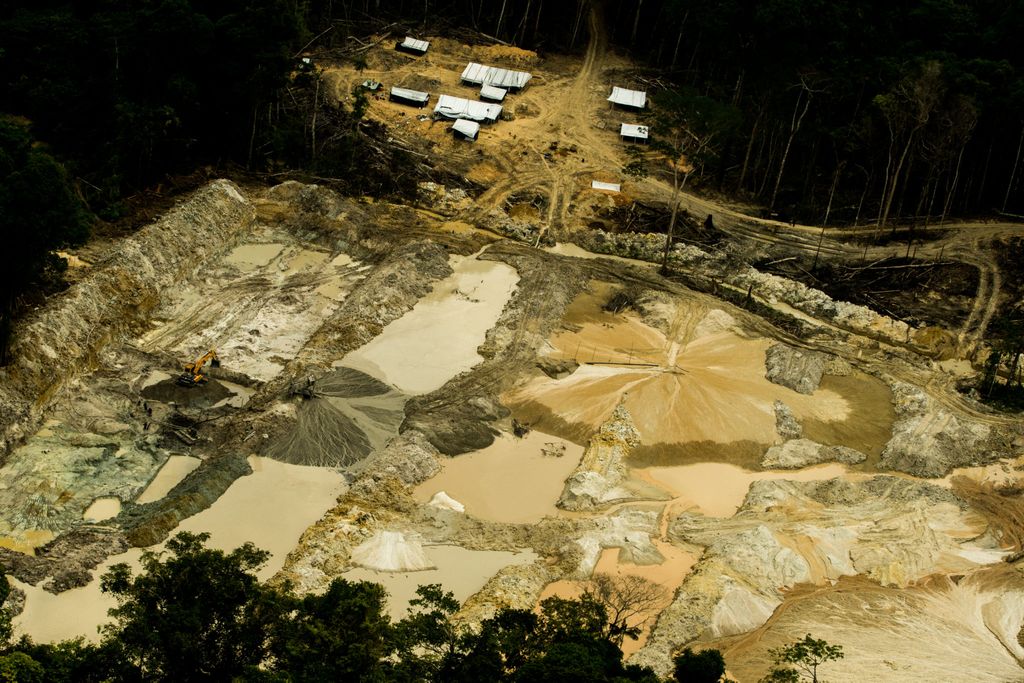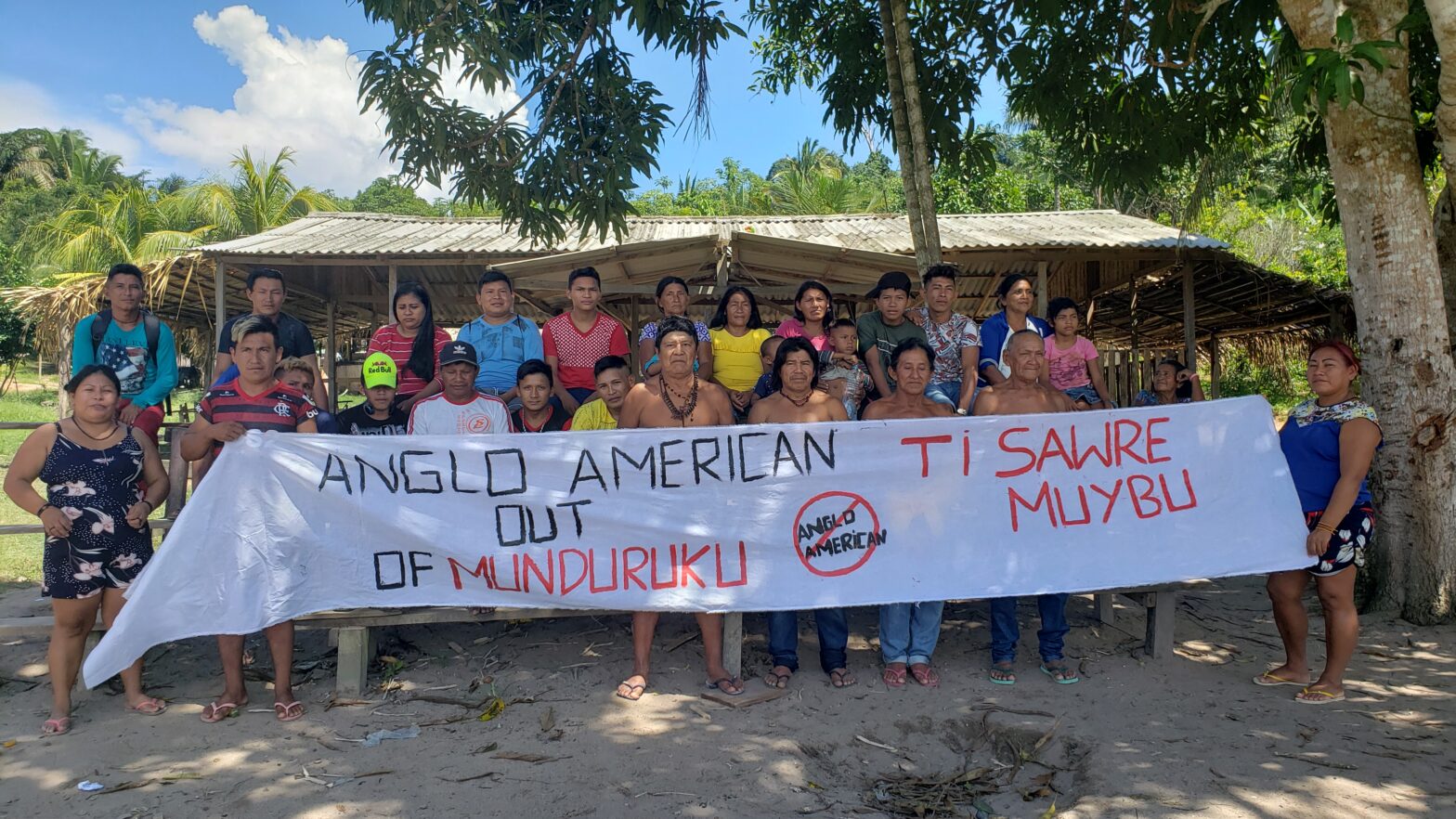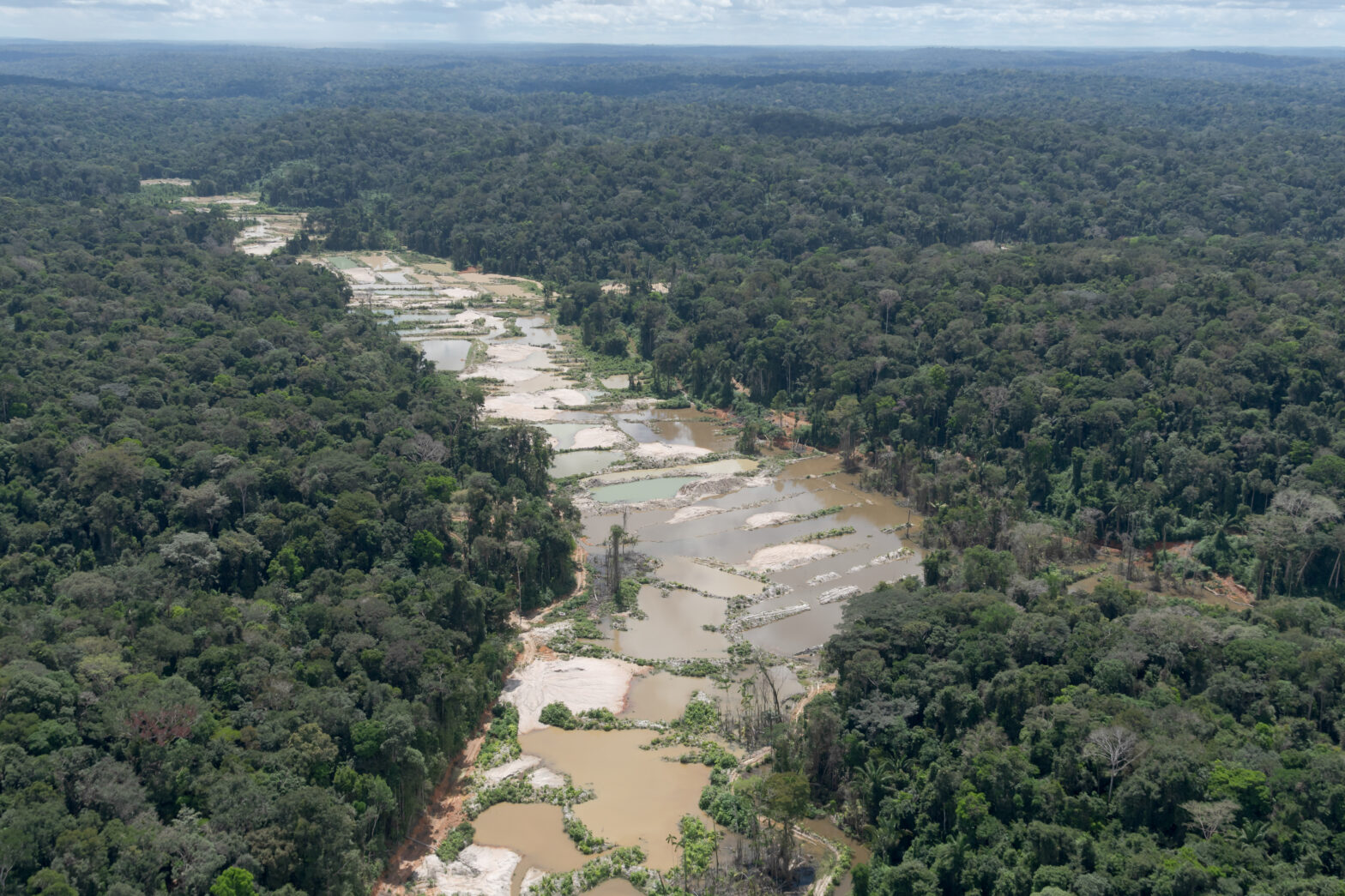A letter from Jacareacanga City Hall, obtained exclusively by Mongabay/InfoAmazonia, asks the Evandro Chagas Institute for help because of a “major outbreak of malaria” in the municipality’s indigenous lands and points out that the increase in cases is related to illegal mining in the region.
by Hyury Potter, Eduardo Goulart de Andrade e Fábio Bispo
Translation: Claudia Horn
Brazil is suffering from the third-highest number of COVID-19 infections in the world, and the second-highest number of deaths, behind only the U.S. But for the residents of the municipality of Jacareacanga in the Amazonian state of Pará, another health crisis is brewing. On Nov. 4, local authorities sent a letter to the Evandro Chagas Institute (IEC), a tropical medicine center linked to Ministry of Health, requesting assistance to deal with a “major outbreak of malaria in special areas” — that is, within Indigenous territories. The letter also warned of the comings and goings of illegal miners, known as garimpeiros, and the possibility of them spreading the disease even further in urban and Indigenous areas.
“As miners travel from one mine to another, malaria is spreading to areas of other mines of non-Indigenous lands as well,” the mayor’s office said, and raised another concern over the local health care system: “In addition to new cases, frequent interruptions in malaria treatment cause a large number of relapses.”

Malaria is endemic across the Amazon region. Of the 13 regional health centers in Pará, only those in Santarém and Altamira showed an increase in cases between 2019 and 2020, according to the State Secretariat of Public Health (Sespa). The other regions saw a drop of more than 50%. By Nov. 10 this year, the Santarém region, which includes the municipality of Jacareacanga, had already registered 8,536 new cases of malaria, compared to 8,427 for all of 2019.
This region, in the southwest of Pará, is rich in secondary gold, which is deposited on the surface of the ground and is thus easy to access. This geological feature attracts many miners hoping for an El Dorado, even if it is on indigenous land. As the mayor’s office warns, illegal mining is one of the main problems in the municipality. According to a Greenpeace analysis of Brazil’s official DETER satellite-based data of forest cover, between January and April 2020 the Munduruku and Sai Cinza Indigenous lands, both located in Jacareacanga, accounted for 60% of mining-related deforestation throughout the Amazon. Data from the InfoAmazonia project “Mined Amazon” show the Indigenous territories in Jacareacanga are the target of 167 mining applications submitted to the National Mining Agency (ANM), even though Brazil’s Constitution prohibits mining on Indigenous lands. Of these applications, 159, or 95%, are for gold mining.
By Nov. 20, 15 Indigenous people from the Munduruku territory had died from COVID-19, according to a survey by the National Committee on Indigenous Life and Memory. At the end of August, Munduruku leaders sent a letter to the Public Prosecutor’s Office in Pará to denounce the advance of mining on their lands, even during the pandemic. They wrote that mining activity has only brought “violence, prostitution, destruction, pollution, deforestation, death threats and conflict.”
The violence cited is also the reason why representatives of the Munduruku have tried to keep a low profile in their own region, as well as avoid on-the-record interviews with journalists. Indigenous leaders who spoke to us on condition of anonymity confirmed the spread of malaria cases in the areas of the Tropas, Cabitutu, Katõ, Karapanatuba rivers and the Indigenous territory of the Sai Cinza, all located in the jurisdiction of Jacareacanga, and all targeted by illegal miners.
A doctor with the Special Secretariat of Indigenous Health (Sesai), a federal agency under the Ministry of Health, said he had treated illegal miners in the region for malaria a few times and that this “always represents a risk of transmission to the Munduruku people.” The doctor, who has five years of experience working in the Munduruku territory and is not being named to protect his safety, said the circulation of miners in the region “increased a lot” in 2019.
“Gold miners are hosts for malaria-transmitting mosquitoes. In addition, the mosquito population increases significantly in wet and flooded environments, such as the mines in the Amazon rainforest”, the doctor said.
André Siqueira, a doctor, and researcher at the Brazilian National Institute of Infectious Diseases (INI/Fiocruz), said areas where illegal mining facilities are present — often precarious and without mosquito nets or repellents — are centers of malaria.
“There is no immunization for malaria, and in an endemic region, one person can easily be contaminated 10 times in a short time frame,” Siqueira said. He adds that 99% of malaria cases in Brazil occur in the Amazon region and that while it’s possible to eradicate the disease here, “we are still far from achieving this.”
“We will only control malaria by strengthening the health and surveillance system,” Siqueira said. “Today, testing posts are created in riverside communities or regions with outbreaks, but soon after the reduction of cases, these units are closed. We should keep these systems working.”
On Nov. 16, we requested a statement from the Jacareacanga mayor and the state government of Pará but did not receive any response as of the original publication of this story on Nov. 25 in Portuguese. FUNAI, the federal agency for Indigenous affairs, said in a response that the Ministry of Health’s Sesai unit “is responsible for coordinating and executing the Brazilian National Policy of Health Care for Indigenous Peoples.” Sesai itself did not respond to our questions.
The Ministry of Health’s Evandro Chagas Institute (IEC) confirmed in a note that it had received a request from the Jacareacanga mayor for assistance in fighting a malaria outbreak. It said it had forwarded the request to Sespa, the Pará state health authority, “expecting it to plan joint action for investigating this outbreak,” and that it was ready to support the authority. IEC added that Sespa “already knew of and was working to contain the outbreak.”
Satellite images show the evolution of mining in 12 months
According to Greenpeace, Protected areas across the Brazilian Amazon are also being targeted by miners. Between January and April 2020, deforestation due to mining in these areas almost doubled from the same period last year, amounting to 879.8 hectares (2,174 acres), or the equivalent of 800 football fields, according to Greenpeace.
One of the affected protected areas is Rio Novo National Park, located between the municipalities of Itaituba and Jacareacanga. This area is designated for full protection under Brazil’s National System of Conservation Units (SNUC), which prohibits mining of any kind. But the Mined Amazon project, which has monitored this area since last year, has recorded 154 applications to mine there. As in the Indigenous reserves, gold is the main target here too, cited in 90% of the applications submitted to the National Mining Agency.
Gold mining in the Amazon involves heavy machinery for removing soil, which leaves marks in the forest visible by satellite. Images provided by Earthrise Media show the destruction caused by mining in Rio Novo National Park and the Munduruku Indigenous Territory between June 2019 and September 2020.
Slide to see the transformation by illegal mining within the Rio Novo National Park between 2019 (left image) and 2020 (right).Satellite images of the national park, in particular, show the scars left in an area targeted in the mining application of Mineração Gold do Água Azul. The company is part-owned by Arthur Correa, a politician from the Social Liberal Party (PSL) who unsuccessfully ran for the City Council of Rio de Janeiro in November’s elections. The images show evidence of mining being carried out in recent months, but the company only applied for a license for exploration in this area. ANM, the mining agency, approved the application, allowing geological studies to assess the feasibility of exploration between July 2016 and July 2019.
Despite the application being filed on behalf of the company, it’s not possible to verify that the company is responsible for the illegal mining shown on the satellite images. Since December 2018, Mineração Gold do Água Azul holds no records in the Federal Revenue Service, the country’s tax authority. And yet, in 2019, its application to ANM moved forward. We contacted the company as well as Arthur Correa by email and through the PSL political party directory, but did not received a response as of the time of the original publication of this article.
Slide to see the spread of illegal mining from 2019 (left) to 2020 (right), in an area targeted by a formal request for mining exploration between Jacareacanga and Itaituba, in southwest Pará.Vale, Brazil’s biggest mining company, is also among those with an interest in the region. It has 69 gold-mining applications pending for just the Munduruku and Kayabi Indigenous territories. In April, at a meeting with shareholders, Vale announced it would cancel its requests on Indigenous lands, only to backtrack and keep the applications with ANM a few months later.
Slide to see the destruction caused by illegal mining in the Munduruku Indigenous Territory in Jacareacanga between May 2019 (left) and June 2020 (right).We asked Vale about these 69 requests, which are ostensibly prohibited under Brazil’s Constitution. The company said it had requested they be withdrawn in 1998. However, in the ANM system, the applications remain active under Vale’s name, with the most recent update made in 2018.
Investigation of Munduruku miners on Brazilian Air Force flight
While the Constitution prohibits mining on Indigenous lands, this can be overridden with congressional authorization. In February, the administration of President Jair Bolsonaro submitted a bill to Congress that would drop this need for congressional authorization. Since the bill was submitted, there has been a torrent of new mining applications — 145 in Indigenous territories in the Amazon — in just 10 months, which is the highest number in 24 years.
On Aug. 5, Brazil’s environment minister, Ricardo Salles, traveled to the Munduruku territory on an operation with Ibama, the federal environmental agency, to oversee the incineration of heavy equipment seized from illegal miners. But after Salles received complaints from miners, the Ministry of Defense canceled the operation the following day, allegedly “to evaluate results, following a request of the indigenous community”.
During the same trip, Salles defended what he called the “right of choice” of Indigenous people to mine in their own territories. On Aug. 6, a Brazilian Air Force flight took miners, including members of the Munduruku, to the country’s capital, Brasília, for a meeting with Salles. The public prosecutor of Santarém opened an inquiry into the use of the aircraft, which, according to the Air Force, was supposed to have been employed in military operations against environmental crimes in the Amazon since May.
The public prosecutor identified “strong indications of inappropriate use of the aircraft of the Brazilian Air Force, which should serve the purpose of Operation Green Brazil 2 in combating illegal mining.” In a note, the state Public Prosecutor’s Office added that “by Brazilian law, all mining inside Indigenous lands is illegal, therefore anyone who admits to being a miner on Indigenous lands is committing a crime.”
In their letter denouncing the impacts of illegal mining, the Munduruku leaders said the Indigenous miners who flew to Brasília “have neither the authority nor the legitimacy” to present themselves as Munduruku leaders.
This report is part of Mined Amazon, a project of InfoAmazonia, supported by the Amazon Rainforest Journalism Fund and the Pulitzer Center. This story was first published here in Portuguese in partnership with Mongabay’s Brazil team on Nov. 25, 2020.
Veja também:
Encouraged by Bolsonaro, mining requests on indigenous lands reach record numbers in 2020
Mined Amazon: Brazilian agency is allowing extractive activities within protected areas





